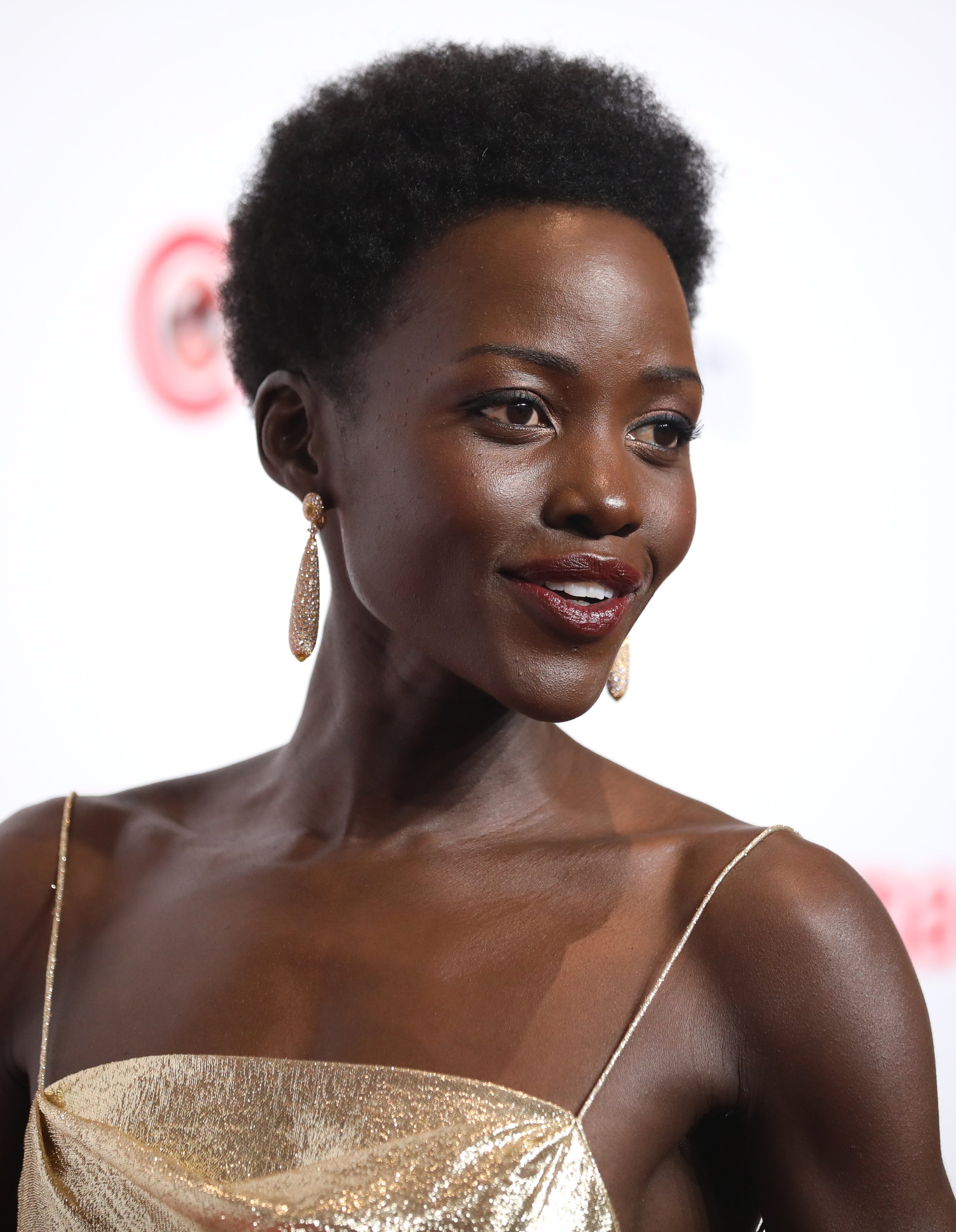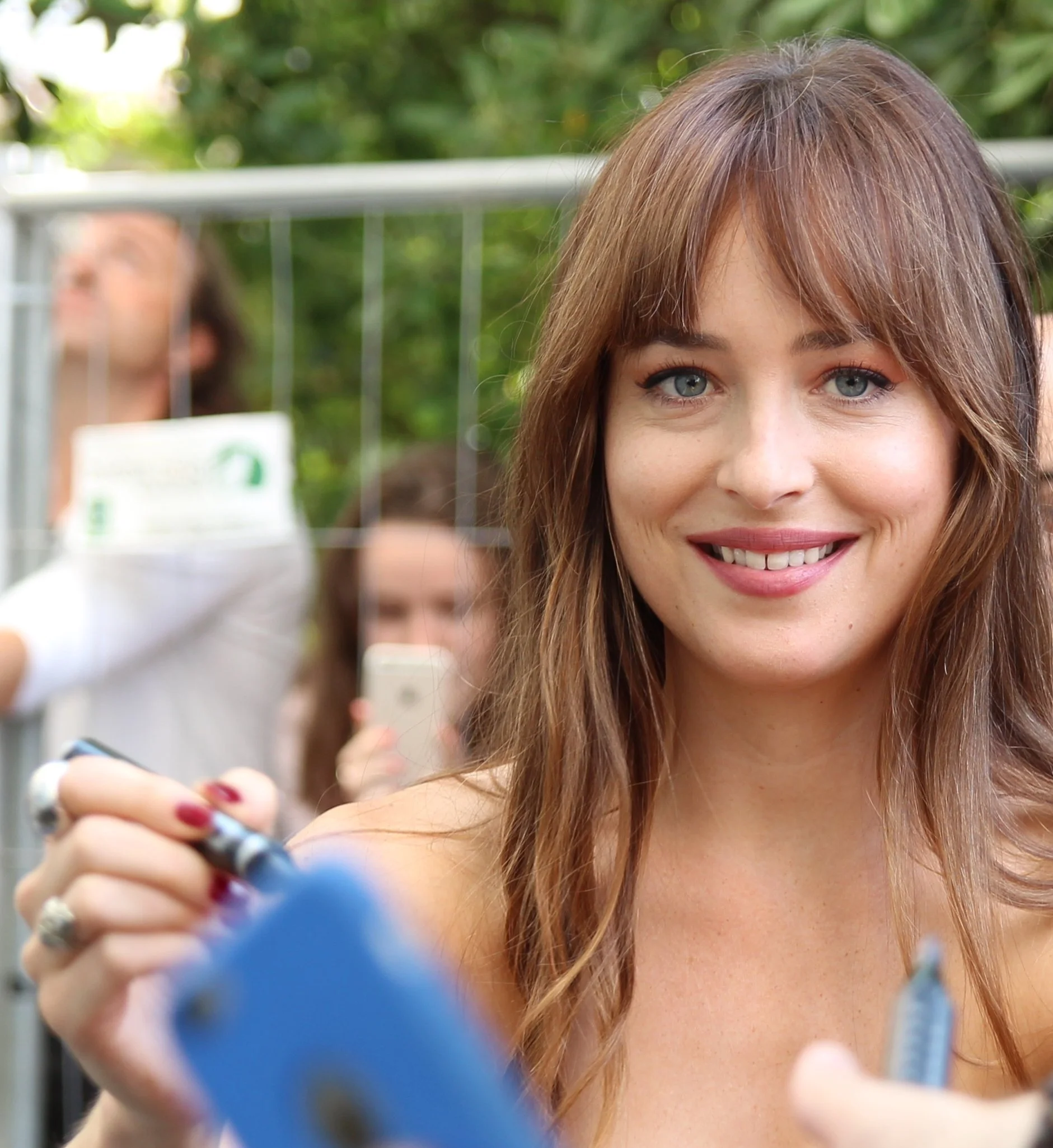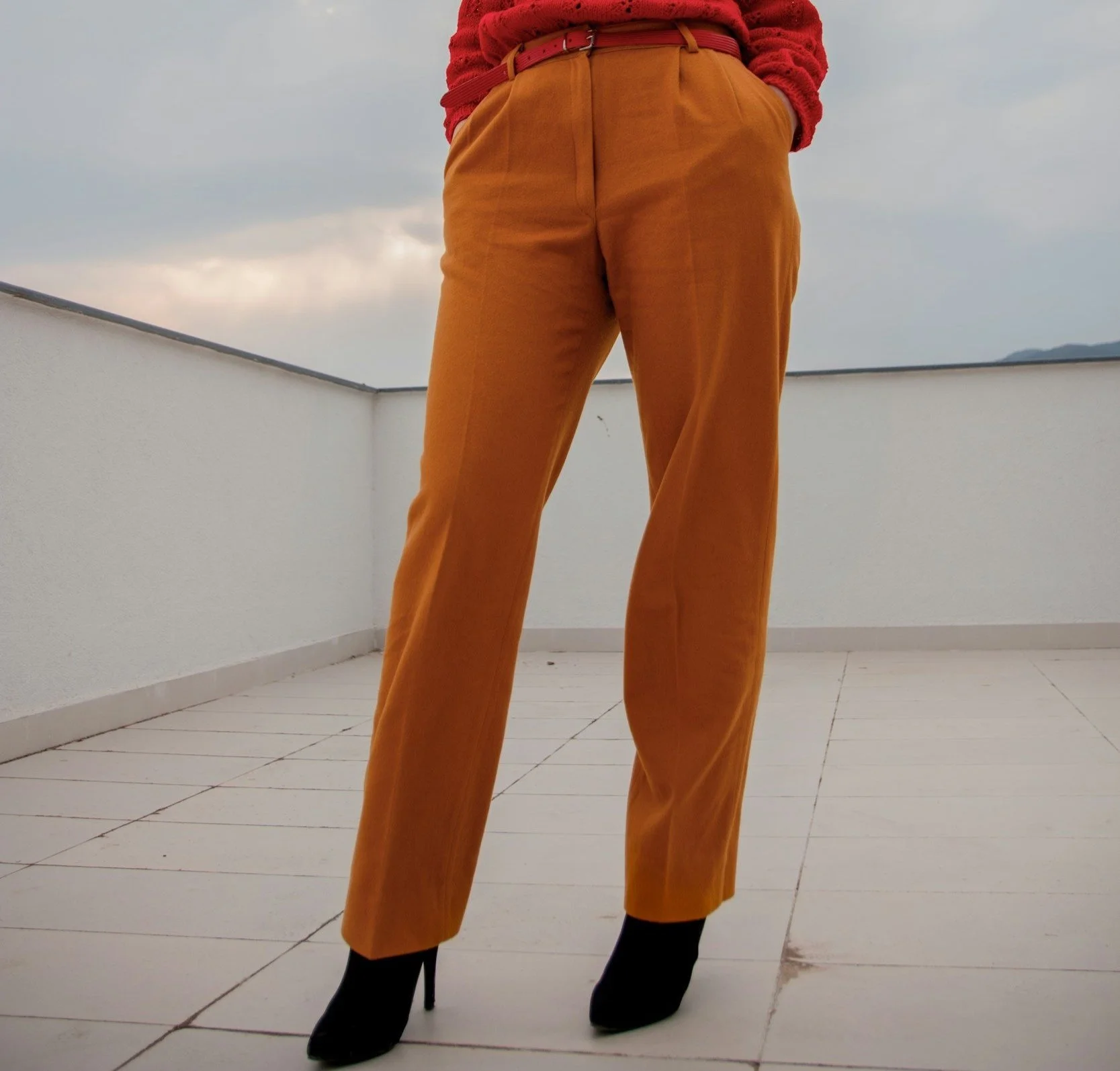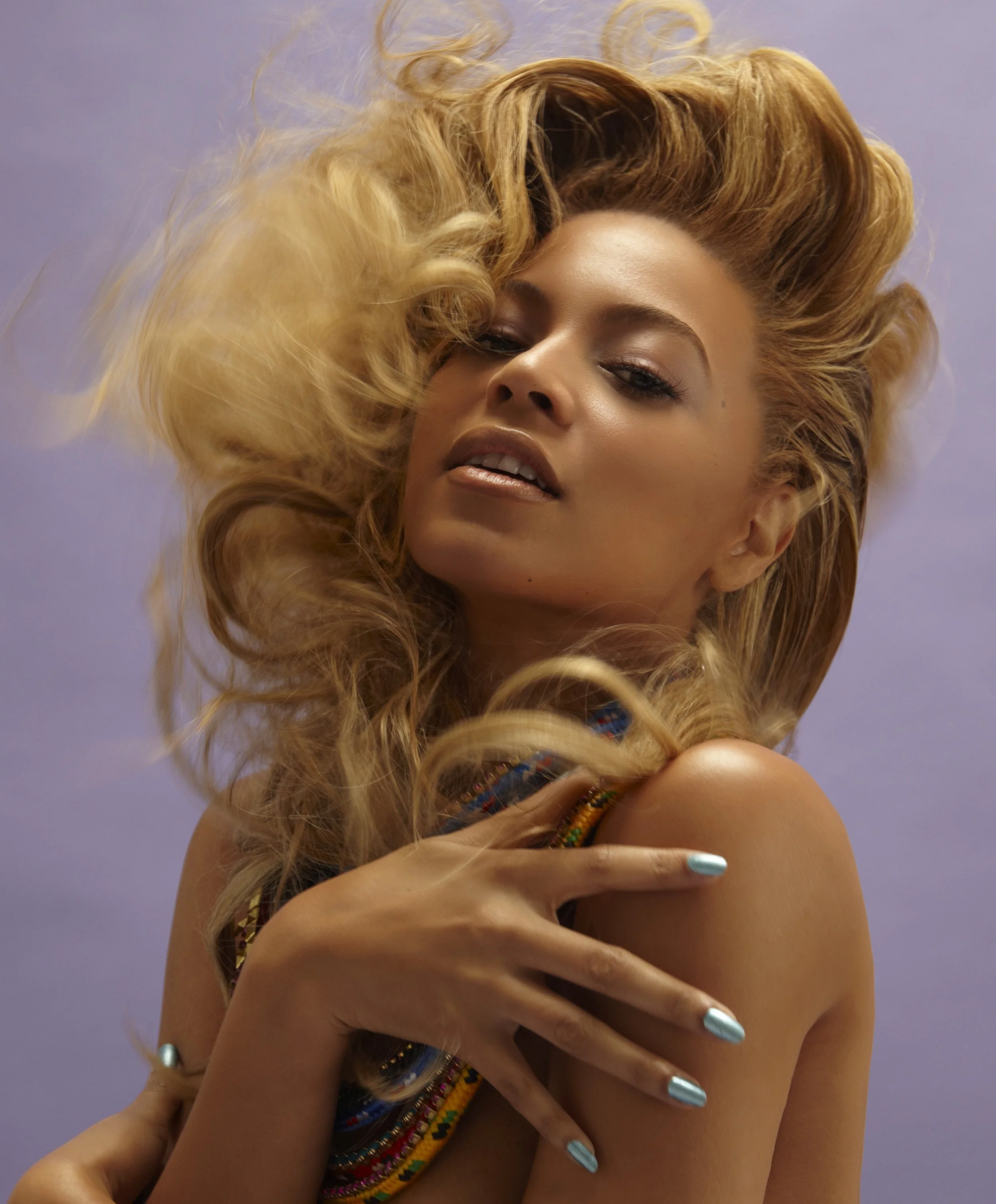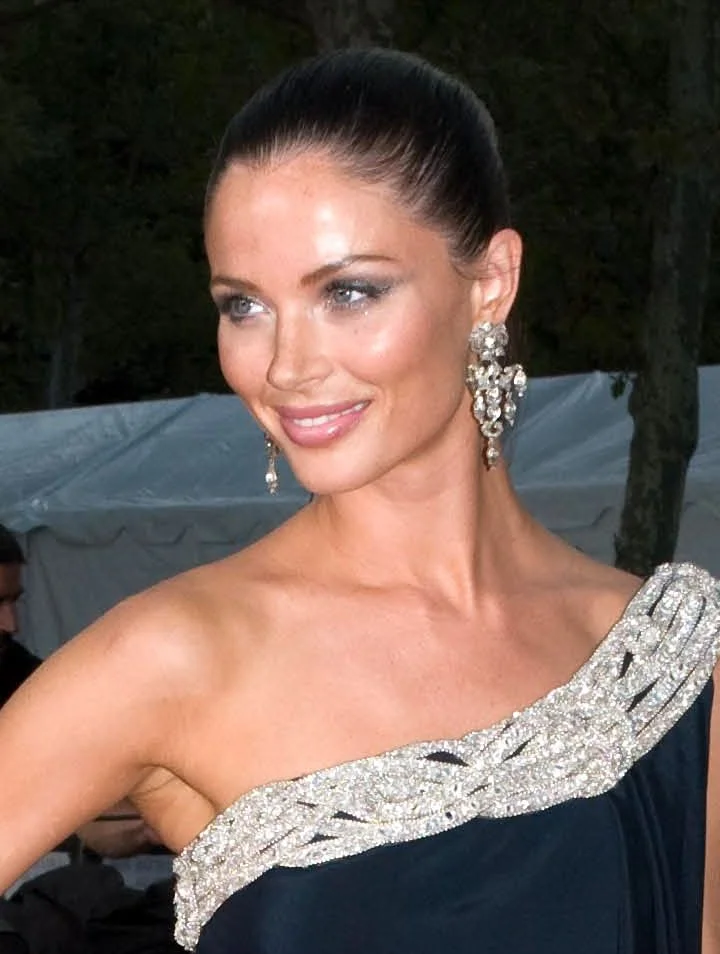How to Marry Your Style Type and Color Season
Making your Style Type work with your Color Season can feel like trying to make a marriage work: you want both your Style Type and Color Season to express their individual selves in the relationship, while also functioning well as a unified whole.
(A bit of a stretch… trying to keep up the Valentine’s Day theme…)
So here’s tips for creating a happy union between your Style Type and Color Season.
1) Emphasize what they have in common
When partners have a lot in common, it facilitates relationship harmony.
So if your style type is Dramatic Gamine, and your Color Season is Bright Winter, your style type prefers intense, bold fashion, and your color season prefers intense, bold colors.
The harmony between Dramatic Gamine and Bright Winter can be seen in Lupita Nyong’o’s street style .
Lupita is a Dramatic Gamine Ingenue and Bright Winter. In her street fashion, the silhouettes, prints, and details are bold and lively, and the colors are also bold and lively. It’s amazing harmony.
Lupita’s Ingenue essence is also flattered by cheerful, relatively bright colors. Her Bright Winter season really complements her essence blend.
Another naturally harmonious pairing is Ethereal Natural Classic and True Summer, which we see with Dakota Johnson:
Dakota’s style essences all easily communicate a calm feel, perfectly echoing the tranquility of her Summer coloring.
If your style type and color season have a lot in common, it’s easy to make them harmonize. You can simply emphasize their shared qualities.
Toward the end of this post, we’ll explore which style essences have the most in common with which color palettes.
But as we’ll see in tips 2, 3, and 4, any style type can absolutely have a happy union with any color season.
2) Your style type wears the pants
Sometimes your style type and color season will be a natural match. But other essence/season relationships can seem to have a ton of conflict.
Consider model Cara Delevingne. Since she’s strongly Dramatic Gamine (with some Ethereal), her style type overall feels bold and intense.
But her Soft Autumn color season feels the opposite—relaxed and laidback.
Despite her gentle coloring, Cara is best known for her powerful brows and intense beauty—her vibe more reflects her edgy style type than her soft color season:
Your style type is more stubborn, your color season is more flexible
Cara Delevingne’s case illustrates an important truth: if there’s a conflict in vibe between your style type and color season, your style type will win the argument.
Why? Shape just tends to more strongly communicate vibe than color.
For instance, a top with gentle shapes (ruffles and puff-sleeves) still looks adorable even in a stereotypically somber color like gray. So do gray prints featuring animals like kittens or bunnies.
And if you’re scared of spiders, then no matter how cheerful the spider’s color happens to be, you’ll probably still be creeped out by a print featuring its 8-legged silhouette. (A neon yellow spider actually sounds particularly terrifying.)
The point: shape is usually more important for communicating vibe than color.
When your style type and color season conflict
So if your outfits have to compromise between the vibe of your essences and the vibe of your season, then you want your essences to have the more vocal voice.
In concrete terms, this means that Cara Delevingne would strive to wear her Soft Autumn colors in a bold, intense (e.g., a Dramatic Gamine) way.
So rather than wearing large amounts of her season’s gentlest blues and pinks, she’d focus on wearing her darker Soft Autumn shades, like reds and neutrals, to communicate Dramatic, and her palette’s most cheerful hues, like oranges and yellows, to communicate Gamine. Doing this would create an intense impression, especially relative to her blended coloring.
She could also color-block with unique color pairings within her palette (like wearing a Soft Autumn orange and purple), since color-blocking, especially with unexpected combinations, is great for Dramatic and Gamine.
By striving to create an overall bold impression with color, Cara facilitates a compromise that works for both her season and style type.
By wearing her Soft Autumn colors, she honors the gentleness of her season. And by wearing her colors in an attention-grabbing way, she validates the intensity of her style type.
(Since she does have Ethereal, she could also wear her colors in a subtler way, like wearing tops and bottoms in very similar tones to create an ombre effect. If she took this approach, she’d want to incorporate a ton of Dramatic and Gamine in other aspects of her look, like her silhouettes and details.)
3) Conflict isn’t actually conflict
I characterized the above relationship—Cara having a bold style type and gentle color season—as a “conflict.” But we actually don’t have to think of it that way.
Because while Cara’s color season isn’t stereotypically bold, wearing her darkest Soft Autumn shades (especially color-blocked outfits) will look bold on her.
Similarly, the Romantic essence is associated with jewel tones, especially vibrant reds and purples. But a Soft Summer can easily create a Romantic impression by wearing the most pigmented reds and purples from her own palette.
Against a Soft Summer’s gentle coloring, Soft Summer reds and purples will create a passionate, Romantic impression.
This is true of any essence/season combination: even when your essence blend and color season seem to conflict, there’s always a way to wear your seasonal colors that flatters your style type. (More on how to do that for the other essences toward the end of this post.)
4) If your color season and style type aren’t an obvious match, that can be especially beautiful
People who are different than us can allow us to see new sides of ourselves that we otherwise might not encounter.
Similarly, having a style type and color season that don’t seem like an obvious match can be an extremely beautiful relationship, and can reveal new qualities in your style type.
For instance, if you have Romantic and a purely warm season (True Autumn or True Spring), then your overall vibe will emphasize the passion, love, and warmth of the Romantic essence.
If instead you have Romantic and a purely cool season (True Summer or True Winter), your vibe can emphasize Romantic’s cooler, more sophisticated qualities: its luxurious, high-maintenance, and even potentially intimidating nature.
If you’re a Romantic whose season has both warm and cool influence (meaning you’re a Bright, Dark, or Soft season), your vibe might emphasize high amounts of both: Romantic’s more warm, welcoming qualities and its more cool, composed, sophisticated qualities.
And the neat part is that you don’t consciously have to work to achieve this emphasis—often it will just emerge naturally.
You can also lean into it, for example by choosing your palette’s stereotypically coolest colors, like blues, if you’re a Romantic Summer or Winter, or choosing your palette’s stereotypically warmest colors, like reds, if you’re a Romantic Autumn or Spring.
Alternately, if you’re a Romantic True Summer but prefer to emphasize the warmth and passion of your Romantic essence, you can focus on your palette reds and deep pinks.
While every color has cool and warm versions, we tend to highly associate red, orange, and yellow with warmth. So even cool-toned versions of these colors can communicate a figuratively warm impression. Similarly, even warm-toned versions of green, blue, and purple can communicate a figuratively cool impression.
Challenging Stereotypes
When color seasons and style types with different vibes combine, it can also help us to challenge conventions associated with different essences.
For instance, as noted above, when Romantic combines with Autumn, it can emphasize Romantic’s warm, inviting nature—and we might not typically think of Romantic as having this welcoming, almost “friendly” quality.
And when Romantic combines with Summer, it can underscore Romantic’s traits of sophistication and luxury, even of elegance. Elegance absolutely can be conveyed by Romantic’s elaborate curving features, but it may often be overshadowed by the essence’s more stereotypically passionate nature.
So being a Romantic Summer can be an especially beautiful thing, because you can choose your season’s coolest colors and sophisticated color combinations to emphasize a side of Romantic that’s sometimes overlooked.
And the equally beautiful thing is you don’t have to do that—you can also wear your Summer palette’s deepest reds and pinks to create a look that will read as figuratively warm (even though the colors are literally cool Summer tones) and passionate.
And of course, sometimes you could wear stereotypically cooler colors and other times stereotypically warmer ones.
As another example, when Dramatic combines with a Winter season, it’s easy to achieve a typical Dramatic impression—powerful, intimidating, commanding. When Dramatic combines with a Soft color season, you could use neutral colors to emphasize slightly different aspects of the Dramatic essence, like its formal, dignified aura.
You could also rely on color-blocking, including with unique color combinations (your palette blue and oranges, greens and purples, etc.) to emphasize the daring nature of your essence.
When your style type and color season aren’t an obvious match, it can be a fantastic opportunity to be creative and to emphasize the uniqueness of your essence/season pairing—to really showcase your individuality.
Can your color season make it harder to find your style type?
Sometimes, if the vibe of your style type conflicts with the vibe of your color season, it might make it harder to accurately type yourself.
Consider Lucy Liu, a Dramatic Natural Classic, who has been typed by others as Dark Winter.
To my eye, Lucy’s skin tone is much more flattered by Bright Spring colors, and that’s how I’ve typed her.
But intriguingly, the overall vibe of Lucy Liu’s style type—serious, formal, and dignified from Dramatic and Classic, with a laidback, down-to-earth quality from Natural—has more conceptual overlap with the serious feel of Dark Winter than with the vivacious feel of Bright Spring.
This might be part of why people type Lucy as Dark Winter: when they type her season, they’re subconsciously reacting not only to her (vibrant) skin tone but also to her (dignified, relaxed) style type.
So it’s possible that if the vibe of your style type and season conflict, people might mistake the vibe of your essences for the vibe of your season, or vice versa, leading to inaccurate typings.
Which color seasons inherently harmonize with which style essences?
I can’t emphasize enough that any color season can be harmonious with any style type.
But it’s also useful to understand which style types have more obvious similarities with which seasons.
There isn’t one objective answer to this, but from my perspective:
Style Essence and Color Season Associations:
Dramatic—Winter. Dramatic’s vibe is serious, intense, and bold, and Winter colors are serious, intense, and bold.
That said, every season can create a Dramatic look by wearing monochromatic color schemes, unusual color combinations, or your palette’s darkest colors (especially neutrals and reds).
Natural—Autumn. Natural’s vibe is laidback and down-to-earth, just like Autumn hues. Plus, Natural’s most flattering colors—understated earth tones—are most obviously found in Autumn palettes.
That said, any season can create a Natural impression by wearing colors like blues, greens, and browns together to create an earth-toned effect.
Gamine—Spring. The warmth and exuberance of Spring mimics Gamine’s energetic, fun-loving nature.
But any season can create a Gamine impression by color-blocking with unique color combinations and by wearing your palette’s most pigmented or cheerful colors (especially oranges and yellows).
Ethereal—Summer. The serenity of Summer color echoes Ethereal’s dreamy nature.
But every season can wear iconically Ethereal colors like very light blues and purples, as well as pale neutrals and gentle color transitions (like ombre and watercolor) to create an Ethereal feel.
Romantic—Winter and Spring. The vivid colors found in Winter and Spring palettes have the most obvious association with Romantic’s deeply passionate nature.
But every season can easily create a Romantic look by relying on that season’s most pigmented reds, purples, and deep pinks.
Classic—Summer (with its elegance and understatement) and arguably Winter (since Winter, like Classic, has an especially serious, formal vibe).
But every season gets neutral colors that can embody Classic’s understated formality, especially when worn in high amounts.
Ingenue—Spring and Summer. Ingenue has a pleasant, youthful vibe that feels both upbeat and well-behaved, embodying qualities from both the cheerful Spring season and the placid Summer season.
But any color season can create an Ingenue impression by wearing high amounts of iconically Ingenue colors, especially light pinks, blues, and purples.
Additionally, if you’re a Soft, Dark, or Bright season, your palette can also embody the vibe of its adjacent season.
For instance, Dark Autumn has Winter influence, so Dark Autumn can be a very natural fit for the intense Dramatic and Romantic essences.
And Bright Winter has Spring influence, so Bright Winter can be a very natural fit for the high-energy Gamine essence.
Summary
If your style type has a lot in common with your color season (e.g., Bright Winter and Dramatic Gamine), it’s easy to create a harmonious look—just emphasize what they have in common
If there’s any conflict between your style type’s vibe and your color season’s vibe, you can focus on wearing your seasonal colors in a way that embodies your style type
So if you’re a Soft Autumn Dramatic Gamine, you can wear your Soft Autumn colors in ways that feel bold, like monochromatic and color-blocked looks. You can also emphasize your darkest colors, especially reds and neutrals, to embody Dramatic, and your most cheerful colors, like oranges and yellows, to embody Gamine
Sometimes it’s especially interesting and beautiful when your style type and color season aren’t an obvious match—it can reveal hidden qualities of your essences, and create an aesthetic that feels highly unique
Any style type can have a harmonious relationship with any color season


